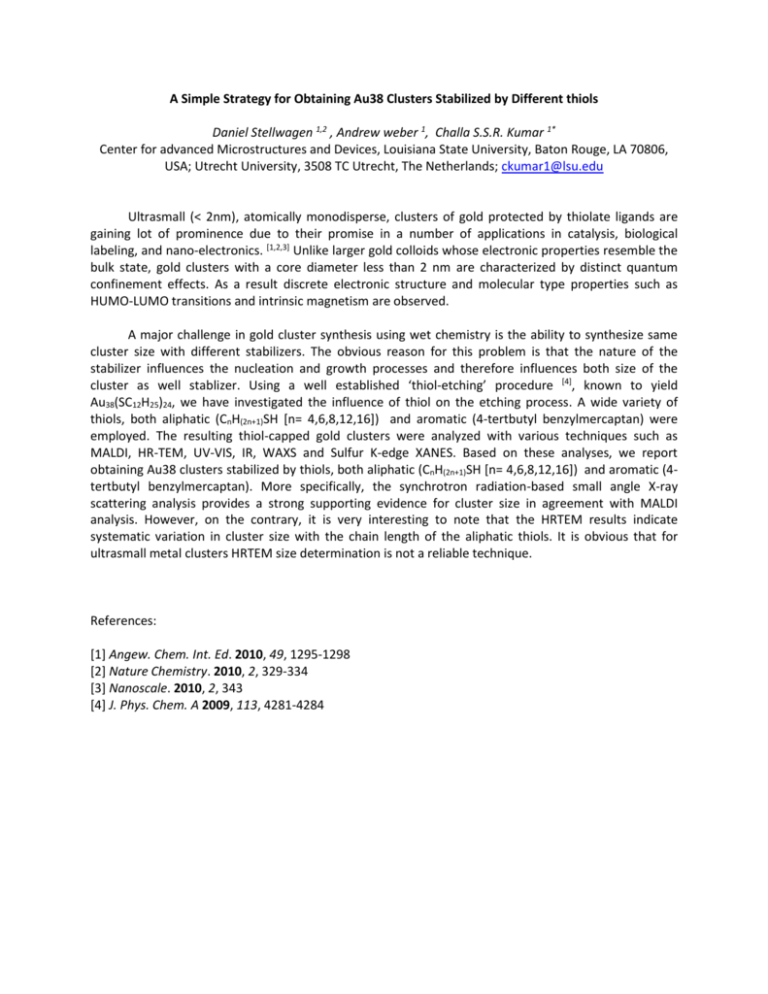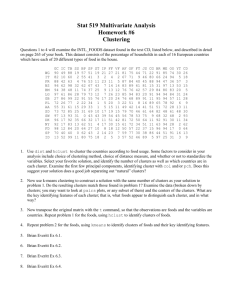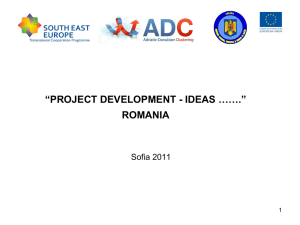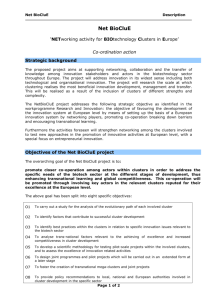Click here - Louisiana State University
advertisement

A Simple Strategy for Obtaining Au38 Clusters Stabilized by Different thiols Daniel Stellwagen 1,2 , Andrew weber 1, Challa S.S.R. Kumar 1* Center for advanced Microstructures and Devices, Louisiana State University, Baton Rouge, LA 70806, USA; Utrecht University, 3508 TC Utrecht, The Netherlands; ckumar1@lsu.edu Ultrasmall (< 2nm), atomically monodisperse, clusters of gold protected by thiolate ligands are gaining lot of prominence due to their promise in a number of applications in catalysis, biological labeling, and nano-electronics. [1,2,3] Unlike larger gold colloids whose electronic properties resemble the bulk state, gold clusters with a core diameter less than 2 nm are characterized by distinct quantum confinement effects. As a result discrete electronic structure and molecular type properties such as HUMO-LUMO transitions and intrinsic magnetism are observed. A major challenge in gold cluster synthesis using wet chemistry is the ability to synthesize same cluster size with different stabilizers. The obvious reason for this problem is that the nature of the stabilizer influences the nucleation and growth processes and therefore influences both size of the cluster as well stablizer. Using a well established ‘thiol-etching’ procedure [4], known to yield Au38(SC12H25)24, we have investigated the influence of thiol on the etching process. A wide variety of thiols, both aliphatic (CnH(2n+1)SH [n= 4,6,8,12,16]) and aromatic (4-tertbutyl benzylmercaptan) were employed. The resulting thiol-capped gold clusters were analyzed with various techniques such as MALDI, HR-TEM, UV-VIS, IR, WAXS and Sulfur K-edge XANES. Based on these analyses, we report obtaining Au38 clusters stabilized by thiols, both aliphatic (CnH(2n+1)SH [n= 4,6,8,12,16]) and aromatic (4tertbutyl benzylmercaptan). More specifically, the synchrotron radiation-based small angle X-ray scattering analysis provides a strong supporting evidence for cluster size in agreement with MALDI analysis. However, on the contrary, it is very interesting to note that the HRTEM results indicate systematic variation in cluster size with the chain length of the aliphatic thiols. It is obvious that for ultrasmall metal clusters HRTEM size determination is not a reliable technique. References: [1] Angew. Chem. Int. Ed. 2010, 49, 1295-1298 [2] Nature Chemistry. 2010, 2, 329-334 [3] Nanoscale. 2010, 2, 343 [4] J. Phys. Chem. A 2009, 113, 4281-4284











